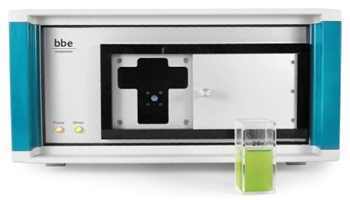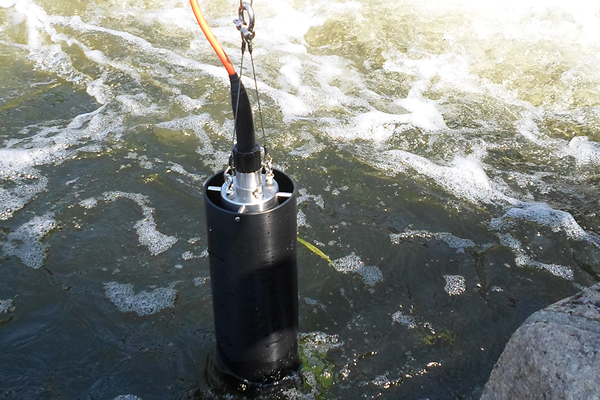BBE Algae Online Analyser
Drinking Water Applications
Climate change, nutrients in waste water treatment plant effluent, and some intensive agricultural practices pose a very real threat to drinking water reservoirs. This threat is seen in the UK and around the world. Eutrophication creates a favourable environment for harmful Algal blooms. Controlling blooms of phytoplankton, including cyanobacteria, is currently a high priority for managing drinking water and recreational water resources as well as aquaculture.
Cyanobacteria have a particular tendency to produce unpleasant taste and odour compounds such as geosmin and 2-Methylisoborneol (MIB). With dwindling drinking water resources there is an ever increasing focus on protecting those resources from unpleasant, musty taste and odour. All algae and cyanobacteria have a well known potential for synthesising and releasing biotoxins. These can have a negative effect on the health of the environment and humans.
The management of lakes, reservoirs and rivers to monitor cyanobacterial blooms is critical to protect human health.
Sample project: Solingen waterworks

The harmful cyanobacteria Planktothrix rubesence has been identified as a dominant bloom-forming genus, as well as a frequent toxin producer. Planktothrix rubescens belongs to the class of cyanobacteria with a specific pigment composition and is thread-like, as are many other cyanobacteria. This cyanobacteria has a red pigment named phycoerythrin. Therefore the cells appear red (Fig. 1). Planktothrix rubescens can produce the toxic peptide microcystin, which can lead to liver damage and cancer . Livestock and dogs are highly sensitive to the biotoxin and can die rapidly after consuming water that is contaminated by it.


The Sengbach dam located in the Nordrhein-Westfalen province in Germany provides water for around 17.9 million people. The dam reservoir has a surface area of 20 ha (49 acre) and the capacity of the dam is 2,8 Mio. m3. The maximum depth of the reservoir is 36 m.

In the spring of 2013, dogs died after dinking the water from this reservoir. Further investigations furnished proof of an increase in Planktothrix rubescens and later on a big algae bloom was reported in the Sengbach dam waterworks.The water production was interrupted for three months after this event. Extensive laboratory tests were carried out daily. Since the beginning of May 2013 these tests have been supplemented by continuous monitoring of the intake with a bbe AlgaeOnlineAnalyser. Below is a picture of the AlgaeOnlineAnalyser which is installed in the intake monitoring station.

The use of the AlgaeOnlineAnalyser drastically reduced the amount of time consuming microscopic analysis. Additionally, an alarm threshold was implemented to monitor harmful algae continuously 24/7.
In an extra approach the algae concentration of different water samples collected from the surrounding lakes and rivers of the dam, were tested weekly more rapidly and accurately in the laboratory of the waterworks using the bbe AlgaeLabAnalyser - shown below.


Cyanobacteria like Planktothrix rubescens were often found to show an accumulation at the thermocline of the dam or lake. To obtain information about the distribution depth of the algae, the profile measurement using the bbe FluoroProbe gave the operators data which allowed them to work out the depth for the water inlet to get the best quality water with lowest algae content (around 12 m depth). Pictures below show some of the measurements of Fluorporobe in 2014.



The fluorometric measurement is a reliable method for determining algae concentration in real time and in-situ. Comparison of the laboratory analysis (cell counting) and the AlgaeOnlineAnalyser measurements show good agreement between the two methods - below picture.



In peak times it became more than 20 µg/l measured in the waterworks. The AlgaeOnlineAnalyzer is a great tool for ensuring the safety of the drinking water supply and optimising the treatment processes.
